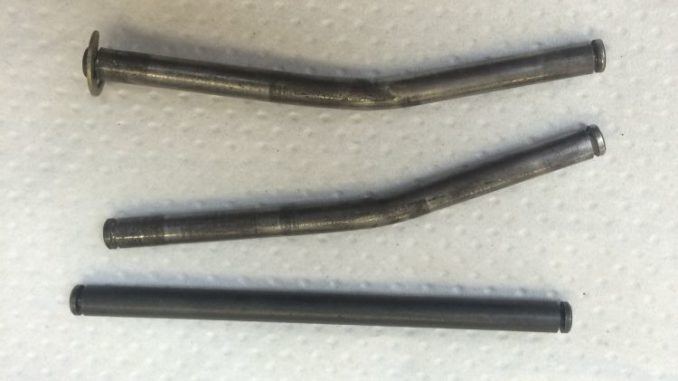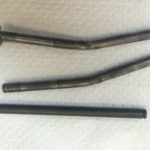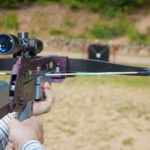
Safety, successful use aren’t built in to the box
Although crossbows have been around for thousands of years, until recently, their use for deer hunting has been legally limited or restricted in most of the country.
But due to many factors, including an aging population of hunters, low hunter recruitment and high deer populations, they are now legal archery equipment in most states.
This has opened new opportunities for both seasoned and new hunters alike, and many have been quick to take advantage.
A crossbow is just what its name implies, combining elements of both bow and firearm. It is a great stepping stone for the gun hunter transitioning to archery, as well as something new and different for a seasoned bow hunter to add to his arsenal.
That being said, there are many misconceptions about crossbows, as well as lack of proper training in their safe use. These two factors leave many new hunters disappointed — or, even worse, injured.
Here are some thoughts and tips to help avoid many of the common pitfalls.
I recommend every new crossbow owner watch a training video or — better yet — take a lesson at a pro shop before shooting the weapon.
People often have misconceptions about the ethical range of a crossbow. Because it has elements of a firearm, they tend to think of its effective range as that of some guns. I often have customers walk into the shop and say things such as, “I need a crossbow because I can’t set up closer than 50 to 75 yards from where the deer are coming out.”
Although a crossbow is certainly capable of a 50- or 60-yard shot on a target, a lot can happen during the arrow’s flight time when shooting at a live animal.
The rear part of a crossbow might have a gun stock and a trigger, but that is where the similarities end.
The front half or “motor room” of a crossbow is essentially a miniature bow and, as such, ballistics-wise it is subject to the same limitations of physics as a compound bow.
For this reason, I recommend keeping shots at game to 50 yards or less to be ethical.
Another misconception concerns speed. In today’s world, we are all about faster, but faster isn’t always better — and it often comes at a cost.
I prefer quiet over fast. With the advent of ballistic-compensating crossbow scopes and laser rangefinders, a flat trajectory isn’t the advantage it once was.
Sound travels at more than 1,100 feet per second, and the fastest crossbows shoot just over 400 fps. That leaves a lot of reaction time for an animal with the reflexes of a deer.
In my opinion, any crossbow that shoots over 310 fps is plenty fast enough, as long as it isn’t too noisy.
I recently switched from a Mission MXB 360 that shoots 360 fps to a Mission MXB Sniper Lite that only shoots 310 fps because the Sniper Lite is so much quieter.
In fact, it is the quietest crossbow I have ever shot — even as quiet as many standard compound bows.
Every Monday morning during archery season, several customers come into our shop with dry-fired or otherwise broken crossbows.
A vast majority of the damage is due to lack of maintenance, improper use due to lack of proper training or simply not paying attention to details. In other words, these incidents could have easily been avoided.
It amazes me that people will purchase a crossbow from a box store or online and attempt to assemble or shoot it without proper training and/or knowledge of any kind. Most archery pro shops will provide customers with proper training and assemble their crossbow, even if purchased elsewhere, for a fee.
Also, the North American Crossbow Federation has made an excellent training video called “Crossbow 101” that will teach proper use as well as safety.
Here are a few tips on the safe use of a crossbow. They are not a substitute for proper instruction, and are not specific to every model or brand.
Always use the same brand and model of arrow that came with your crossbow at the time of purchase. Unlike vertical bows, most crossbow arrows do not snap onto the string, so the shape and material of the nock is critical to prevent a dry fire.
Most crossbows must be in the fire position in order to cock them, and the safety will engage automatically when they are cocked. If using a cocking rope, make sure the hooks are hooking up from underneath the string. If they are hooking down over the top, they can jump over the side of the rail, breaking the arrow retainer.
Always lubricate the rail or deck with a recommended lubricant before each shooting session. The string generates a lot of friction sliding down the rail on each shot, and lubrication helps reduce string wear.
Also, make sure your arrow is correctly indexed and fully seated against the string. The smallest gap here can lead to a dry fire and severely damage your crossbow.
Check for bow limb clearance when hunting from a stand. Remember that the bow will return to its uncocked dimension at the shot.
Last but very importantly, make sure your thumb and fingers are clear of the path of the string and cables. Many people lose thumbs because they aren’t aware of the danger.
Crossbows add a new dimension to the hunt for many, and they involve new people in our sport.
With proper instruction, they can add to your overall experience in the woods. Be sure to become familiar with your crossbow and to get properly trained before getting out there.
Try something new this year and go “horizontal.”




